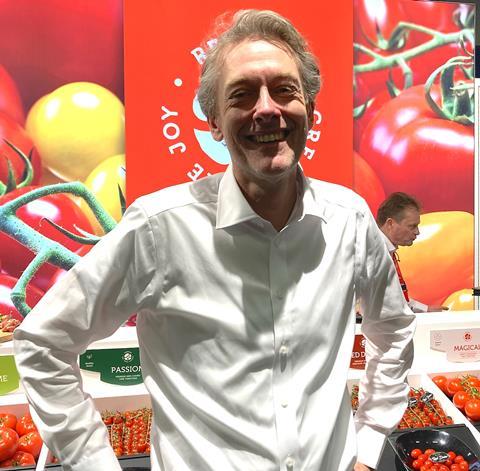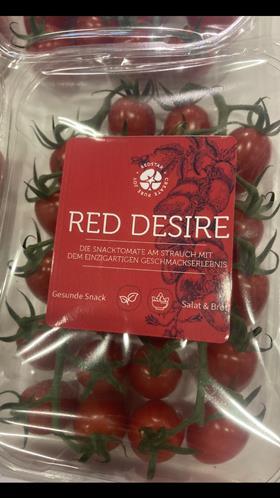A lack of consumer knowledge about tomato varieties and their different uses, and an absence of in-store assistance, leave many shoppers overwhelmed and likely to reach for the cheapest option, warns RedStar’s Martijn van Keulen
Shoppers across Europe will have noticed the proliferation of tomato varieties over the last couple of decades, but a lack of guidance through such a varied category can leave many consumers feeling daunted, according to Martijn van Keulen, head of marketing at Dutch producer RedStar.

“I did some consumer research to see where the frictions are in the supermarket,” he tells Fruitnet. “Many shoppers are following their partners’ shopping lists, and they come into the supermarket thinking they just need 500g of tomatoes. But when they look around, they see as many as 40 different varieties, so which ones do they choose? We try to help this kind of consumer make a better choice by adding guidance on the packaging about the flavour and the best occasions for consumption.”
Van Keulen estimates that around 75 per cent of shoppers will look at the price of tomatoes, and that will be the deciding factor. “We are focused on the more premium, tastier tomatoes so we don’t necessarily compete on price,” he says. “For many consumers, the issue is not wanting to pay more for a tomato if they’re not sure it’s the right one, if it’s worth the extra cost. So they buy a cheaper one and then at least it’s not the price that is the concern. Obviously if you buy on price, quality is less of an issue. So it’s a case of trying to break that routine. It’s about behavioural change, trying to get consumers into the mindset of making a better, more informed choice.
“There are so many tomato varieties, and there is likely to be a regular worker attending the grocery section, not a specific fruit and veg expert, so we need to help the supermarket more. Something I’m looking forward to is the switch in the coming years from barcodes to QR codes. As a producer, we can include all sorts of information for the consumer, telling the story of our tomato, where it comes from, add a video of the tomato’s journey, offer recipes, all of which help the consumer to make an educated decision.”

The main reason people visit an actual supermarket rather than buying online is the vegetable section, according to van Keulen, and in the vegetable section, tomatoes are the main target. “So, in fact, the main reason people visit the supermarket is tomatoes,” he says. “This is massive. So it’s important for supermarkets to have that section under control. If people skip the tomatoes in the supermarket, they might even skip the whole thing and go online.”
RedStar has also investigated the differences between offline and online purchases, especially when it comes to the specific packaging needs of tomatoes. “Online, shoppers basically buy a picture of a tomato, so the packaging doesn’t need to display the tomato like it does in the store,” van Keulen points out. “The packaging can also be much tougher to protect the tomatoes during transportation. These are some of the concepts we are sharing with our retail partners.”
At the moment, the main challenge in tomatoes is ToBRFV, with breeders focusing on developing tomatoes with resistance. According to van Keulen, the tomato category is currently going through a transitional phase.
“If you look at the tomatoes we have right now, I’m betting that in five years the whole assortment will have changed,” he says. “It’s such an accomplishment by breeders to have developed so many resistant tomatoes. But they are not finished yet. I am convinced that the next-generation tomatoes will have an even better taste. A major shift is coming, with the voice of the consumer increasingly at the heart of new developments.”
Martijn van Keulen will be speaking more about his research at Global Tomato Congress in The Hague, Netherlands, on 14 May.
https://www.fruitnet.com/tomatocongress



